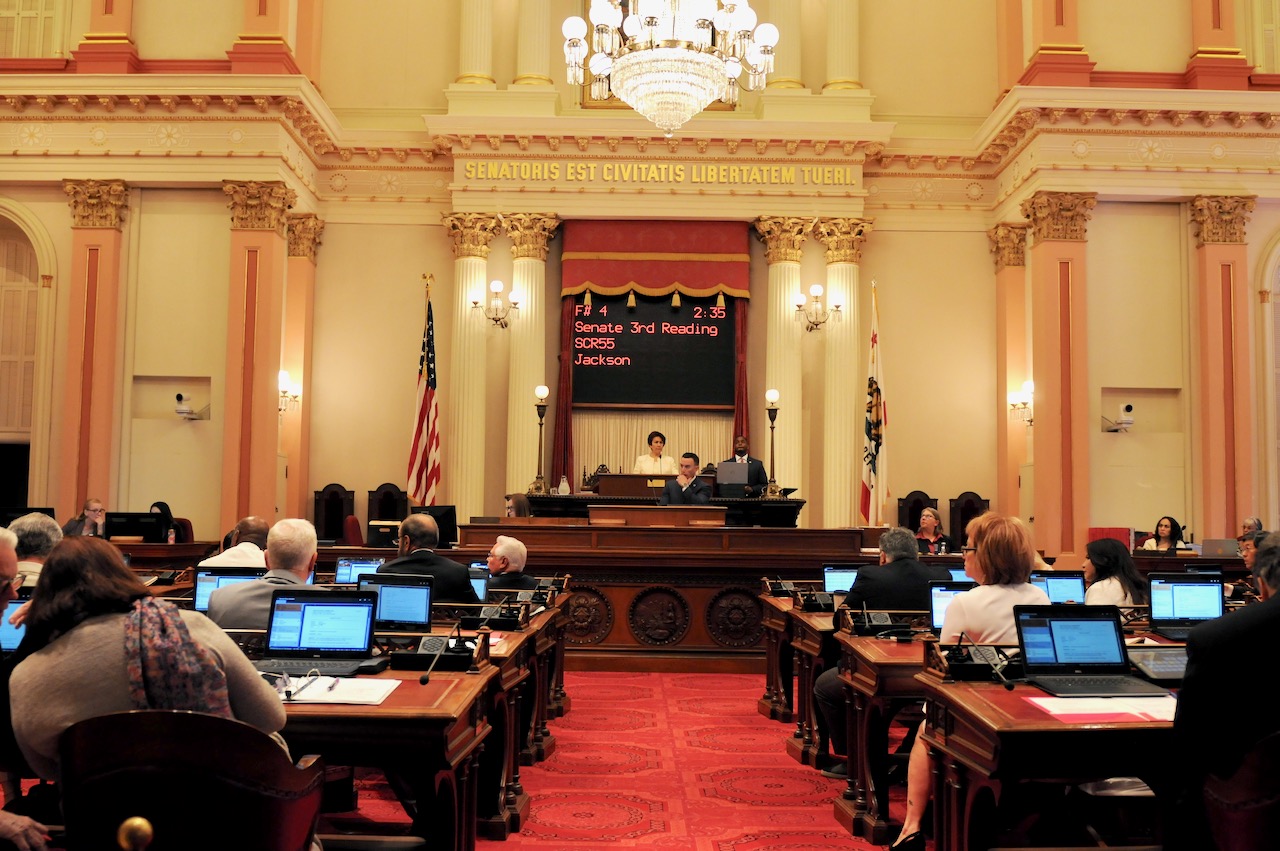
California State Capitol (Photo: Kevin Sanders for California Globe)
Establishing a Quorum In the California Legislature
If there is an insufficient number of Members present on either Floor, then there is a call of the absent members
By Chris Micheli, October 10, 2022 7:40 am
What is the importance of a quorum and how is it established? In the California Legislature, according to the Office of Legislative Counsel, “a quorum must be recorded in order for legislative business to be transacted.”
For example, Section 7(a) of Article IV of the California Constitution provides, in part, the following: “A majority of the membership constitutes a quorum, but a smaller number may recess from day to day and compel the attendance of absent members.”
As a result of this constitutional requirement, the quorum is the minimum number of legislators that are required to be present in order to begin conducting official legislative business in committees or on the Floors of the Senate and Assembly. And, a quorum is one more than half of the entire body, which means at least 41 Members of the State Assembly and at least 21 Members of the State Senate.
Those who listen to the Assembly or Senate Floors will often hear the “call of the house” being made and that “a quorum is established” or that the “quorum call is lifted.” What do these different phrases mean and why are they used?
First, the “Call of the House” or the “Rollcall” is the first official item in the Order of Business on both the Assembly and Senate Floors. This “call” is the procedure that is used to compel the attendance of Assembly Members and Senators to their respective floors, and to require those in attendance to remain in their respective Chamber.
If there is an insufficient number of Members present on either Floor, then there is a call of the absent members – sometimes referred to as “Call the Absentees” or “Call the Absent Members.” This “call” is the order by the Presiding Officer of the Assembly or Senate that directs the respective Reading Clerk to read the names of the Members who have not responded to the initial roll call.
Second, the “Quorum Call” is the statement of the Presiding Officer of the Senate or Assembly that the Members of the respective house are needed to establish a quorum so that official proceedings can begin. Once a sufficient number of legislators are present on the floor, then “a quorum is established.”
The same applies to the committees of the Senate and Assembly. For example, Joint Rule 62(a) provides that: “A bill may not be passed out by a committee without a quorum being present.”
So, under Joint Rule 62(d), “The chairperson of the committee hearing a bill may, at any time, order a call of the committee. Upon a request by any member of a committee or the author in person, the chairperson shall order the call.” Moreover, JR 62(d) specifies that, “in the absence of a quorum, a majority of the members present may order a quorum call of the committee and compel the attendance of absentees. The chairperson shall send the Sergeant at Arms for those members who are absent and not excused by their respective house.”
In addition, also pursuant to JR 62(d), “A quorum call or a call of the committee with respect to a particular bill may be dispensed with by the chairperson without objection by any member of the committee, or by a majority of the members present.”
Finally, “a quorum call is lifted” when the official legislative business for the day has concluded and the legislators are free to depart their respective floors. This announcement is often made before adjournments in memory are heard in the Assembly or Senate Floors, and prior to the adjournment motion being placed.
- Modifying or Terminating Child Support Orders - December 17, 2025
- Procedures for Adult Adoptions - December 17, 2025
- Quiz on Where Areas of Law Are Found in the California Codes - December 16, 2025




